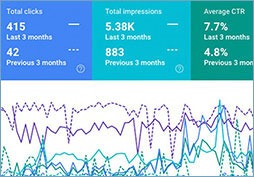The title addresses a very broad and — one could also argue — highly subjective subject. But the purpose here is to break it down into measurable elements. So let’s take this step-by-step.
Fit the style to your venue

Where will your article (blog post, FAQ, letter, etc.) appear? Depending on whether it is slated for a [print] newspaper, a website, magazine, an emailed newsletter, or other format, you will want to tailor the piece to fit what readers are used to seeing.
Since we only focus on web venues, our articles tend to be shorter, as well as broken down into “bite-sized” pieces, which are easier to absorb — even on the phone.
Know your audience

Are they highly technical? Driven by emotion (for instance, parents researching conditions of their sick children, or people going through a divorce)? Looking for an authoritative source?
Whatever motivates your readers, you have to understand those motivations well enough to tap into them. After all, they came to you for a reason. Figure out what that reason is and is, and make sure you address it.
Understand your purpose

On your side of the equation, there must be a specific goal you have that your articles are meant to help you achieve. Again, in our business, more often than not we are trying to encourage some kind of behavior in our readers. We’d like them to dig deeper into the site, fill out an online consultation request, contact us via phone, etc.
Based on your goals, your article should lead the readers toward the outcome that you would like to see.
Appealing to search engines
Not only is this getting more and more complicated, but balancing the need to appeal to search engines and human readers simultaneously can be a daunting task. One of the key factors to completing this successfully is to start with research, and use that to create a logical outline.
Once you have the outline created, you can write the article from a “human” point of view, knowing that your search engine targets are already built into the structure.
Connecting with your readers
It is the “human” angle stated previously that allows you to use language in a way that reaches your readers beyond mere logic. People rarely make decisions based on logic; what they generally do is to make decisions based on emotion, and then simply use logic to rationalize those decisions.
Your challenge is to make an emotional impact on your readers.
The importance of “flow”

This is probably the hardest to quantify or explain, but in our opinion may well be the most critical element that makes up good writing. Well-crafted material “draws” the reader along effortlessly. It smoothly joins concepts, and segues from idea to idea until you are at the end of the piece without even realizing that it took you any time to read it.
Needless to say, this is the rarest quality in a writer. And it is the prime reason why our writers are on our team!








